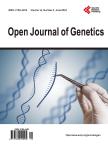An update on the role of prokineticins in human reproduction-potential therapeutic implications
An update on the role of prokineticins in human reproduction-potential therapeutic implications作者机构:Dr Kulvinder Kaur Centre for Human Reproduction Jalandhar India Rotunda—A Centre for Human Reproduction Mumbai India Swami Satyanand Hospital Jalandhar India
出 版 物:《Open Journal of Genetics》 (遗传学期刊(英文))
年 卷 期:2013年第3卷第3期
页 面:201-215页
学科分类:1002[医学-临床医学] 100214[医学-肿瘤学] 10[医学]
主 题:Prokineticin 1 Prokineticin Receptor 2 Kallmanns Syndrome Implantation GnRH Development
摘 要:Objective: Prokineticin-1 (PROK1) is a recently described protein with a wide range of functions including tissue specific angiogenesis, modulation of inflammatory responses and regulation of haematopoiesis. PROK1 has been found in the steroidogenic organs like ovary, testis, adrenal and specially placenta and they have been found to have a role in development of the olfactory system and GnRH system. The aim was to update the role of PROK1 and PROK2 inhuman reproduction since the review was provided by Maldono-Perez (2007) on the potentials of prokineticins in reproduction. Design: A review of international scientific literature by a search of Pubmed and the authors files was done for citation of articles relevant to prokineticins in reproduction, be it its role in ovary, testis, uterus with special emphasis on implantation, normal pregnancy, in labour, pathophysiological states like tubal pregnancy, pcos, various genital tumours, and cases of isolated hypogonadotropic hypogonadism with mutations with PROK2/ PROKR2 and studies detailing functional mechanisms. Results: In the normal cycle, PROK1 has been found to have important roles in implantation, regulating several genes like COX-2, IL-8, IL-11, CTGF related to implantation. Initially murine studies revealed a critical role of PROK2 pathway on olfactory bulb morphogenesis and GnRH secretion which was accidentally discovered and since then several studies on mutations in PROK2/PROKR2 showed that they underlie some case of KS in humans. Although in mouse heterozygote state is not associated with clinical phenotype, most of human mutations are heterozygous. Conclusions: Role of PROK-1 in the process of implantation, with a deeper understanding of the process success rates in IVF and ART can be improved, besides understanding the pathophysiology of tubal pregnancy. Further presence in ovarian follicles of PROK1 can be used to plan a strategy for treating pcos. Development of antagonism of PROK’S may be a helpful stra



